Requirements for floor lighting
A certain number of requirements that you should familiarize yourself with:
- Lighting around the perimeter of the floor or lighting fixtures mounted in its plane must have a high degree of protection against water. Thus, when cleaning, water will not be able to get into the housing of the light source and damage the current-carrying elements.
- The housings should be able to protect the lamps and be as stable as possible and not afraid of mechanical impacts. The same applies to lighting mounted in the floor plinth, which can be accidentally damaged due to careless movement of furniture.
- The housings of the light sources should also not heat up so much, as this will contribute to the melting and even spontaneous combustion of the baseboard.
- Since hidden floor lighting is mainly used to ensure comfortable movement in the dark, the lighting fixtures should emit a soft, dim and muted glow.
- Bright light in the room can be created by using strips that have a small diameter but are distinguished by high power. For a diffused light flux, low-power wide cords are suitable.
- For lighting, you need to use electrical appliances that consume a minimum amount of electricity.
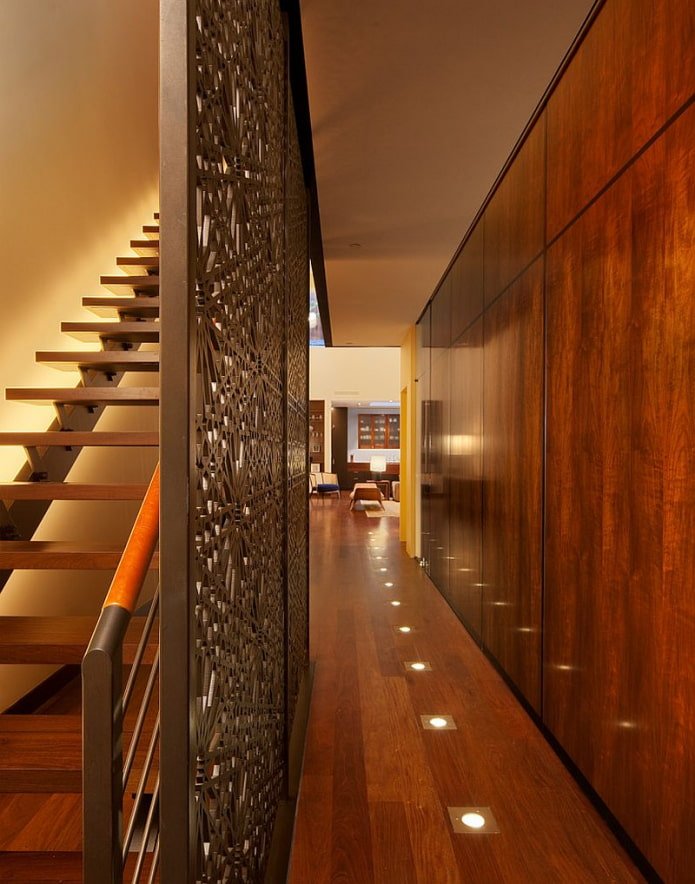
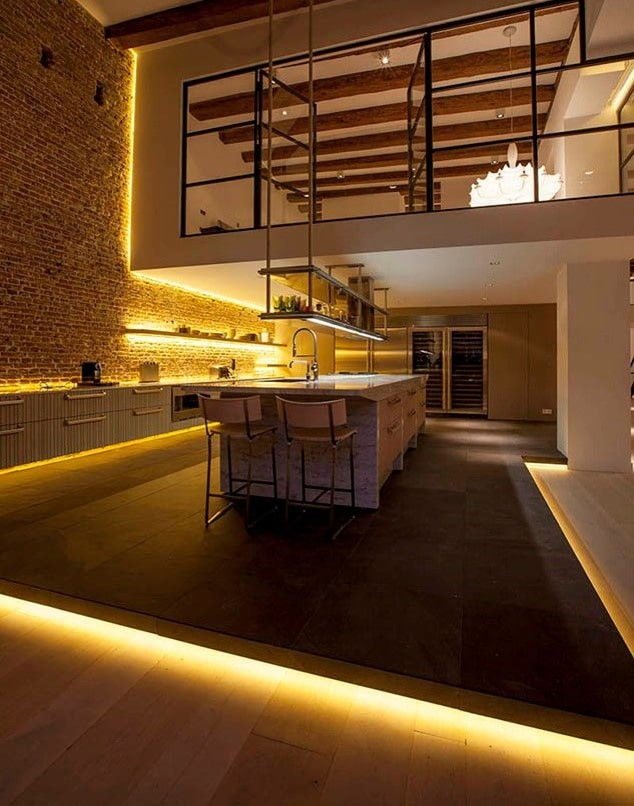
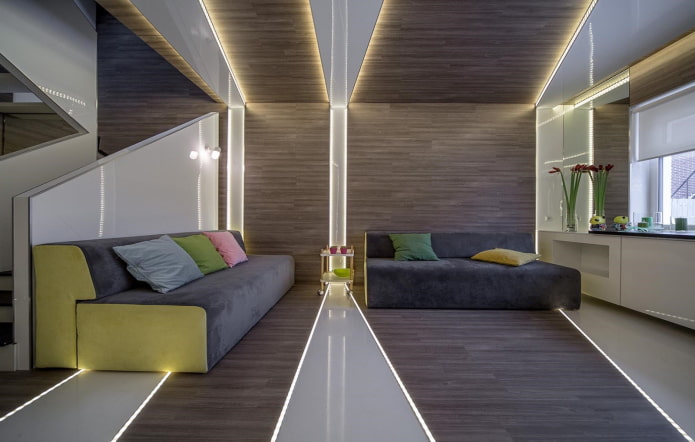
The photo shows floor lighting in the interior of the living room.
Which lamps are better to use?
There are a large number of light sources. Both the simplest bulbs and complex LED structures can be used for decoration.
Spotlights
To install in a laminate, parquet or wood floor covering, you need to make several appropriate holes. The devices can also be mounted in the plane of the wall or in a large baseboard located on one side of the room. For embedding, compact products with a small height are mainly chosen.
Floor spotlights are placed perimeterally or installed near one or two opposite walls. It is also possible to install spotlights as a two-sided frame for the passage.
Considering the moisture-resistant properties, this type of lighting is often used in bathroom design. Spotlights on the floor will also allow you to achieve a decorative setting in the interior of a bedroom or hallway.
The advantages of this lighting include free symmetrical or asymmetrical arrangement of devices, high aesthetic qualities, original design, and long service life. The lamps are reliable and in most cases are not afraid of mechanical damage and moisture.
The disadvantage of spotlights is the periodic replacement of lamps and labor-intensive installation, which requires thoughtful placement of wires so that each source is supplied with energy.
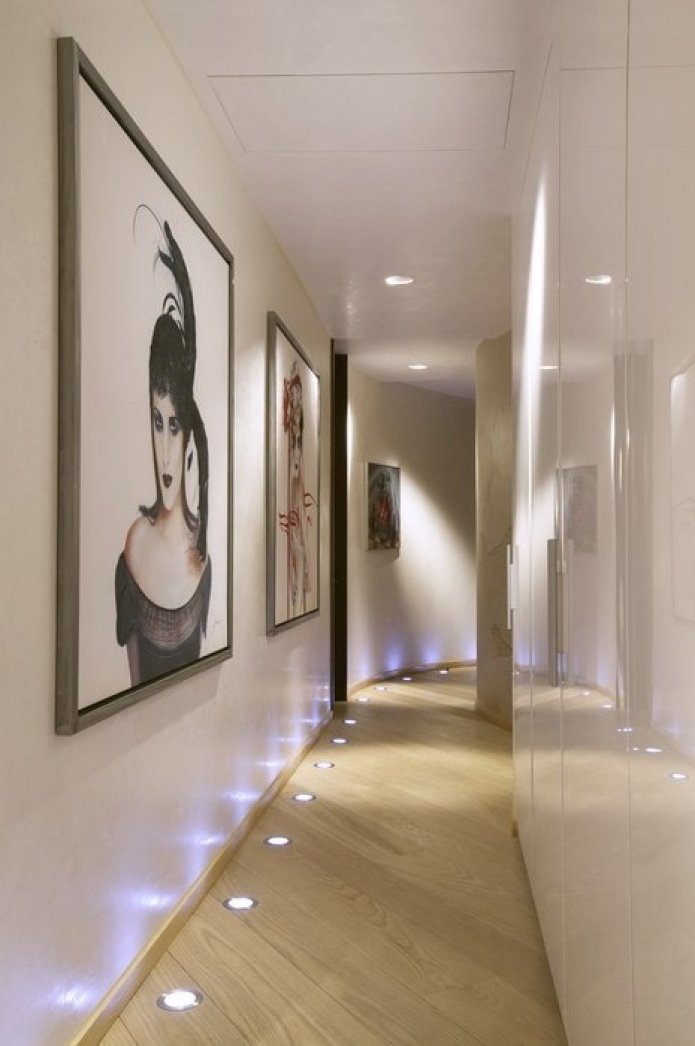
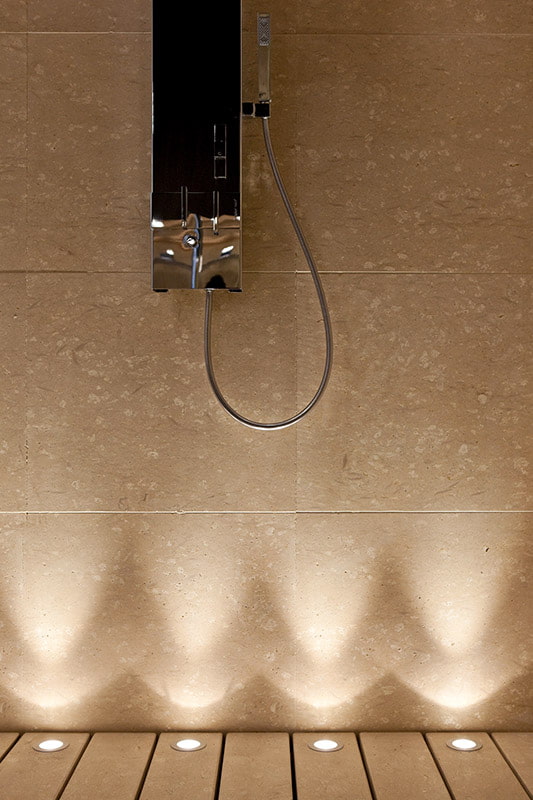
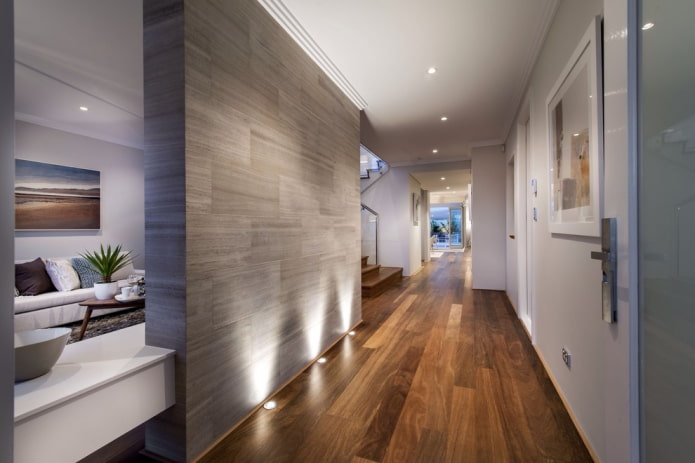
The photo shows a hall with floor lighting with spotlights near one wall.
Floor lighting with LED strip
A popular option for floor lighting is duralight in the form of a transparent tube with LEDs or incandescent lamps. This type of lighting is distinguished by a variety of colors, which allows you to easily choose a shade for any interior. LED duralight has a soft and calm light stream, which sufficiently illuminates the floor plane.
The LED strip requires a special cable channel for laying and a niche in order to install a hidden power supply. Often, such lighting is used as an additional one in combination with spot lighting. A remote control will help simplify the task of controlling such lighting.
The advantages of LED strip: long service life, reliability and easy installation, which can be done by yourself. You only need to purchase a power supply with the required power.
The disadvantages include high cost and standard brightness. Some people think that the light coming from LED strips is too bright and directional.

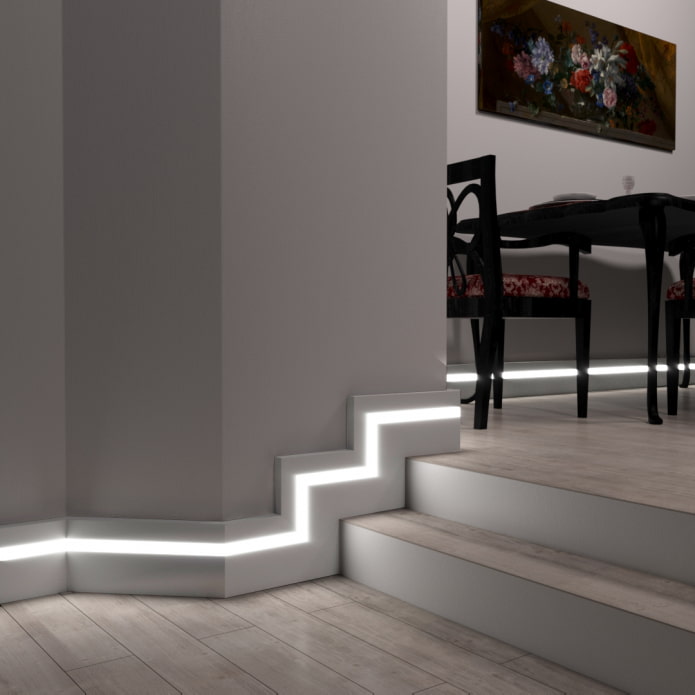
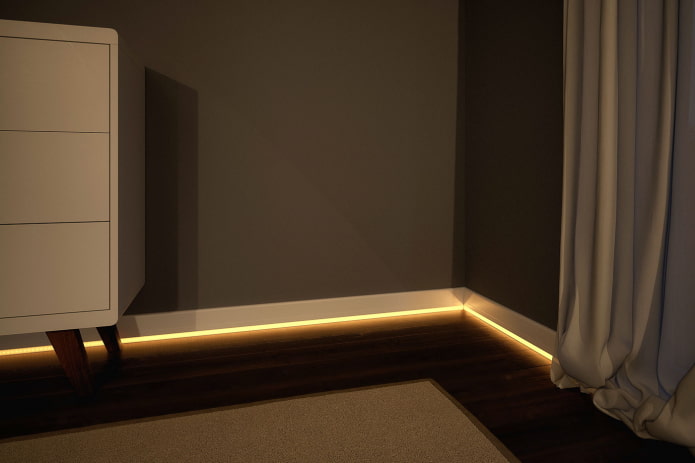
The photo shows floor lighting with a baseboard supplemented with an LED strip.
Neon cord lighting
Flexible neon is very convenient because it is suitable for both installation at right angles and for creating unusual luminous patterns. The neon cord looks like a sealed PVC tube equipped with miniature neon lamps.
The advantages of floor lighting with neon lamps are that it lasts a long time, has a wide variety of shades, emits a pleasant diffused glow that does not irritate the eyes.
The disadvantages include a high price category, fragility of bulbs and complex installation. It is difficult to install such floor lighting on your own, so it is better to contact specialists.
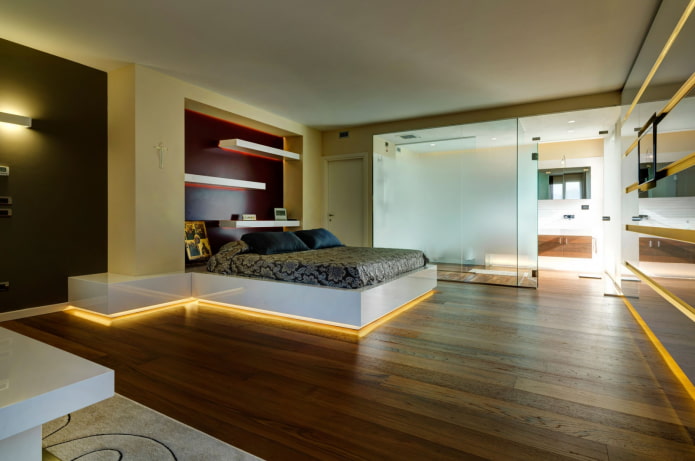
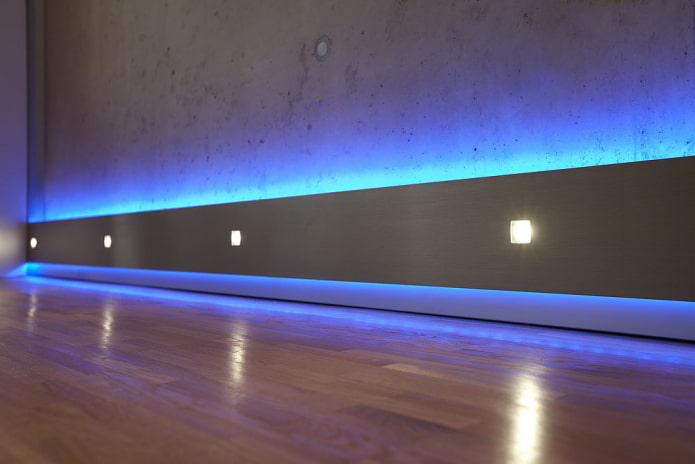
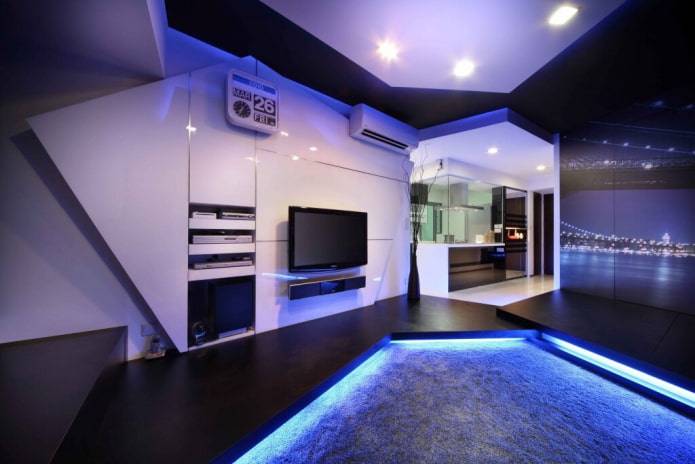
The photo shows a modern living room interior with blue neon floor lighting.
Light modules
Such lighting in the form of transparent modules, inside which there are LEDs, can differ in different configurations and sizes. Products equipped with drawings with a 3D effect look interesting. Thanks to the poured squares, you can create an original lighting composition, for example, such as a chessboard or a rectangular path.
In an apartment, the modules can be appropriately used as a light rug in the design of a bathroom or hallway. This type of lighting is often equipped with a motion sensor, which allows the modules to turn on automatically.
Advantages of light modules: high resistance to damage and complete tightness.
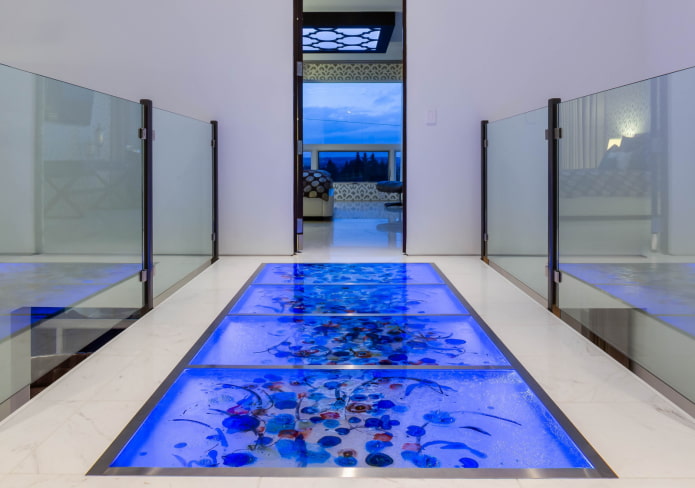
The photo shows floor lighting in the form of light modules in the interior of a house.
Where in an apartment can you install lighting?
Various examples of floor lighting in the interior of an apartment.
Floor lighting in the hallway
In the hallway, lighting is used along the perimeter of the room, illuminating the spaces between tiles or individual segments of the floor. The installation method and type of lighting fixtures depend on the intended effect.
Floor lighting directed at wall surfaces will not only add decorativeness to the interior, but will also emphasize the texture of the finish. Also, with the help of built-in lamps, you can correct the incorrect configuration of the room.
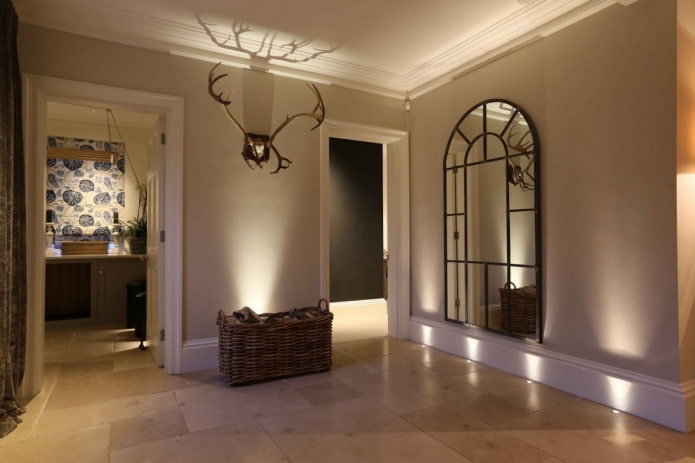
The photo shows the design of a spacious hallway with spot lighting on the floor.
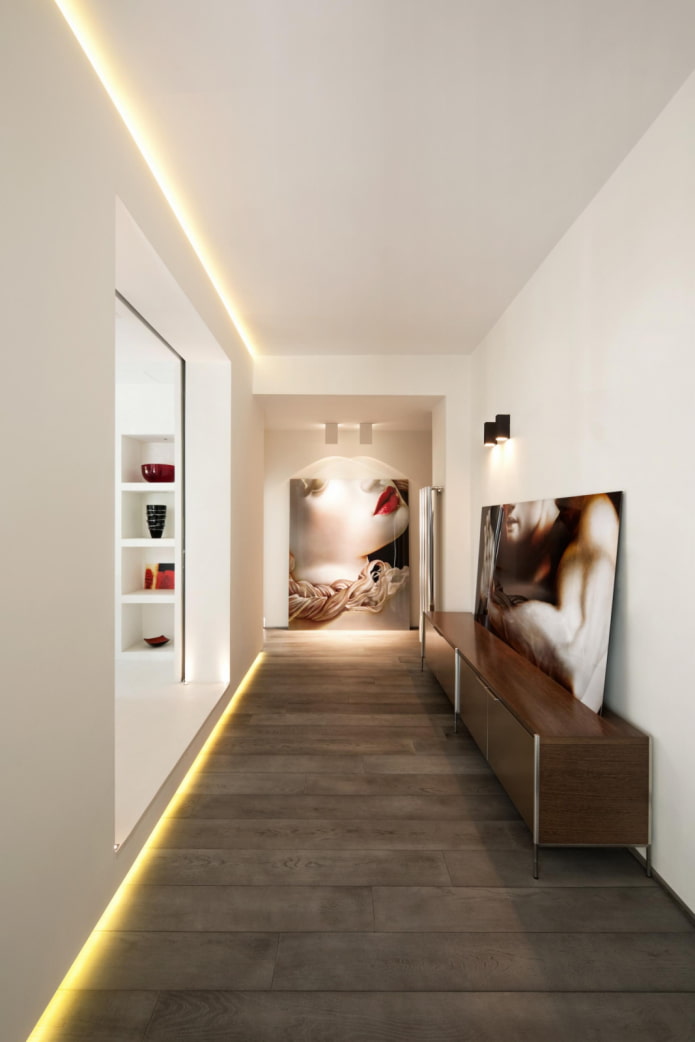

In a narrow and long corridor, it is appropriate to place light sources along the entire length of the room. This can be one LED strip or a line of several spotlights.
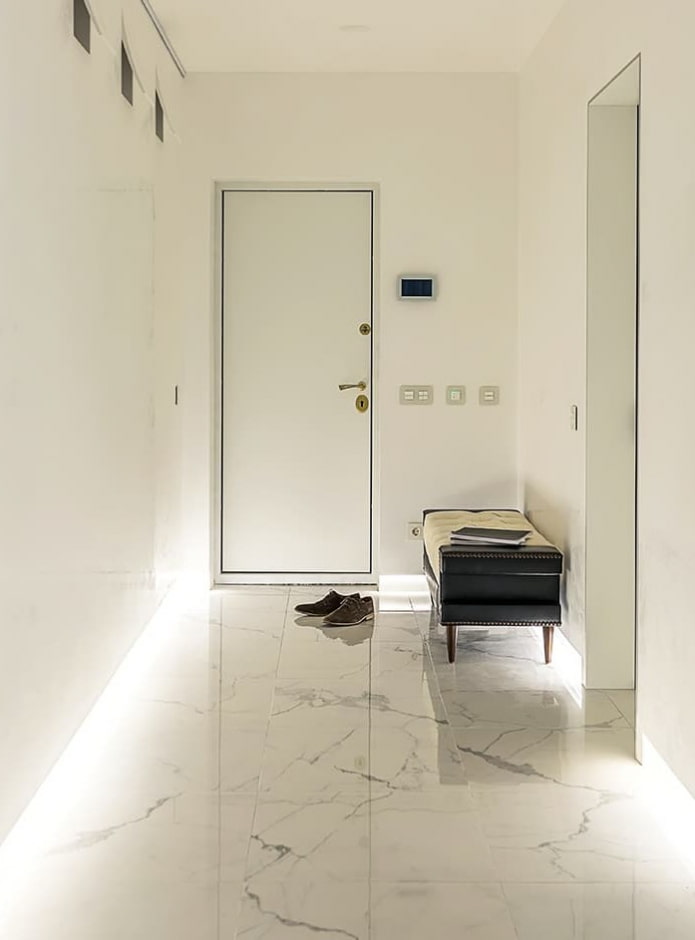
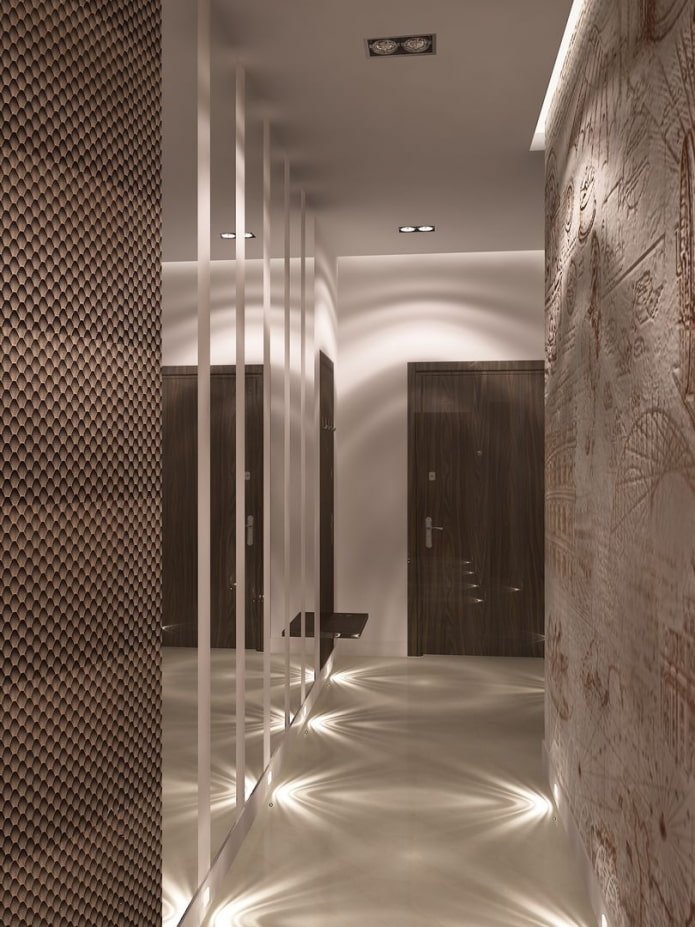
Floor lighting in the toilet
In the toilet, floor lighting acts as an original decorative addition to the main light. Built-in models or LED strips are suitable for decoration. Each of the options will look amazing and will add some uniqueness to the toilet interior.
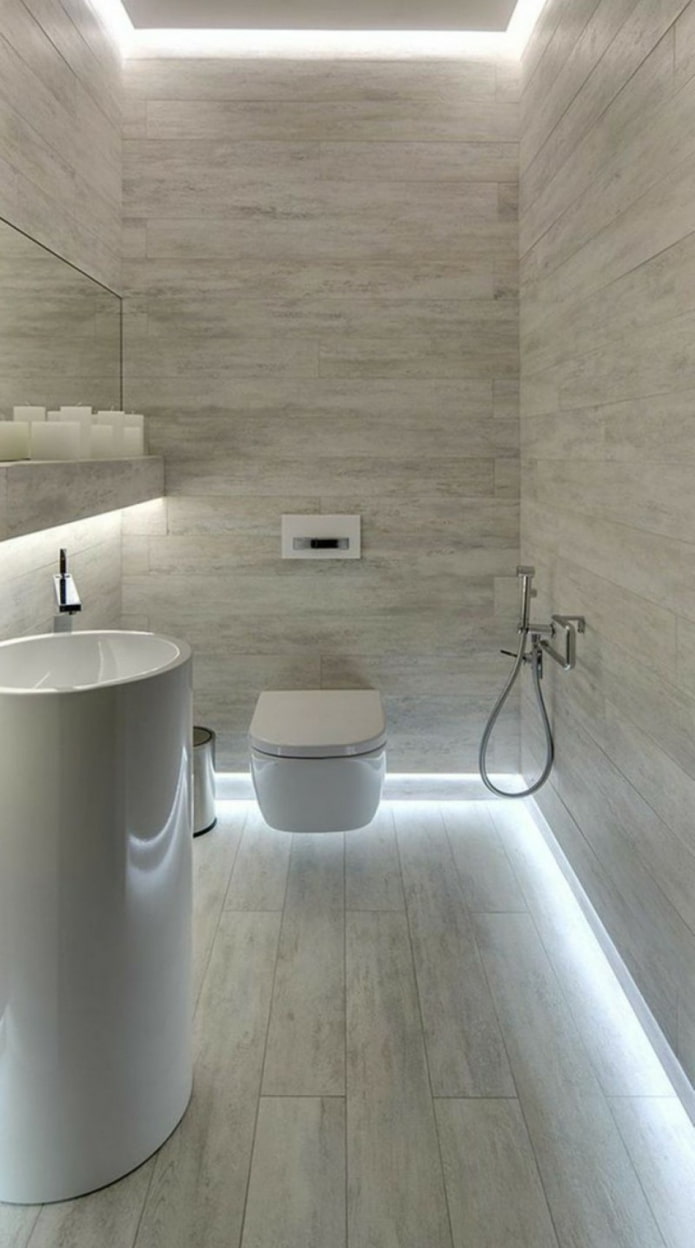
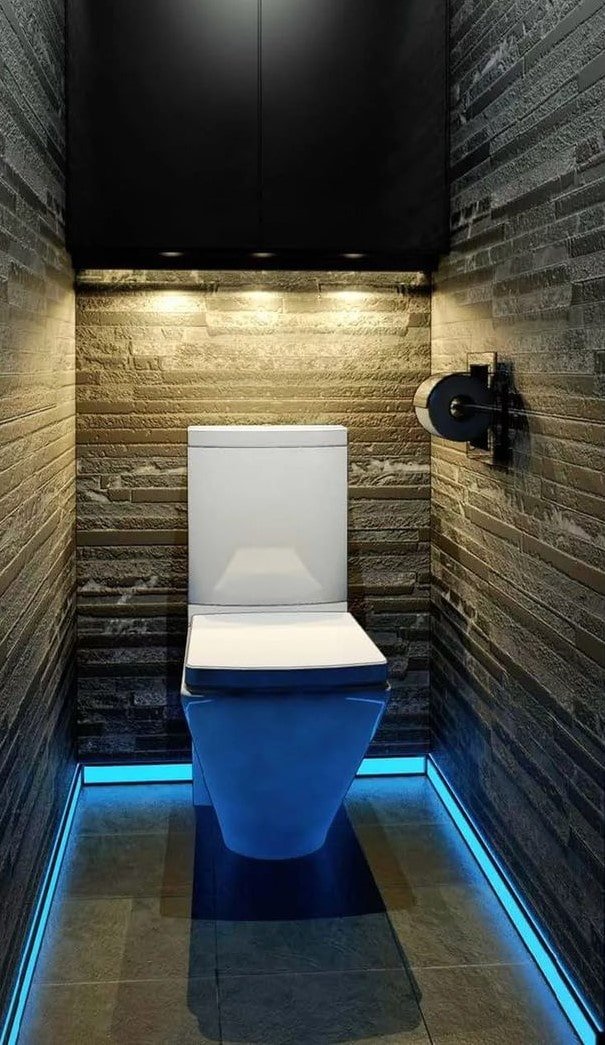
Floor lighting in the bathroom
Effective floor lighting will create a pleasant and cozy atmosphere in the bathroom. It is important to choose safe light sources that are not afraid of water and temperature changes, especially if they are supposed to be placed next to a sink or bathtub. Plastic ones are better than glass ones.
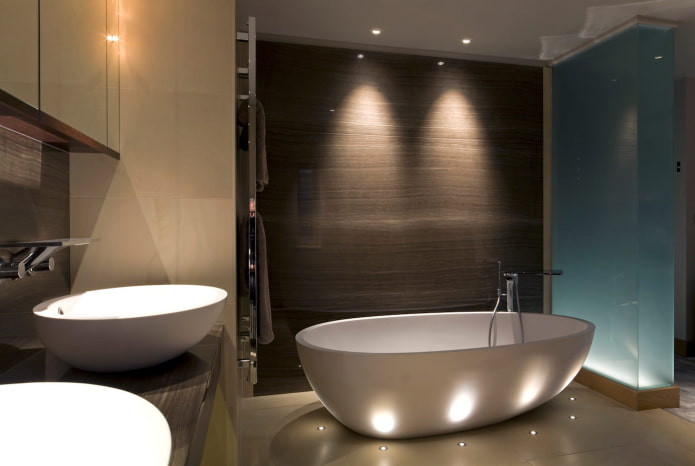
The photo shows a floor with spotlights located around the bathtub.
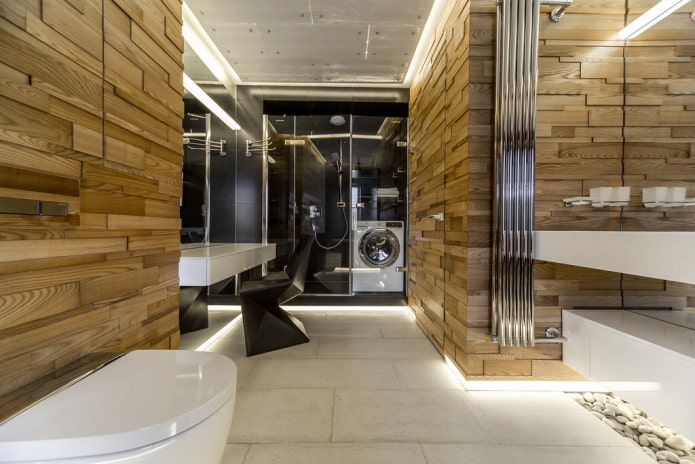

In a bathroom with a modest area, you can visually increase the space with the help of floor lighting. Floor lighting is advantageously combined with suspended plumbing. Due to this design, it is possible to enhance the floating effect of sanitary devices and achieve a soft level of lighting, pleasing to the eye, especially at night.
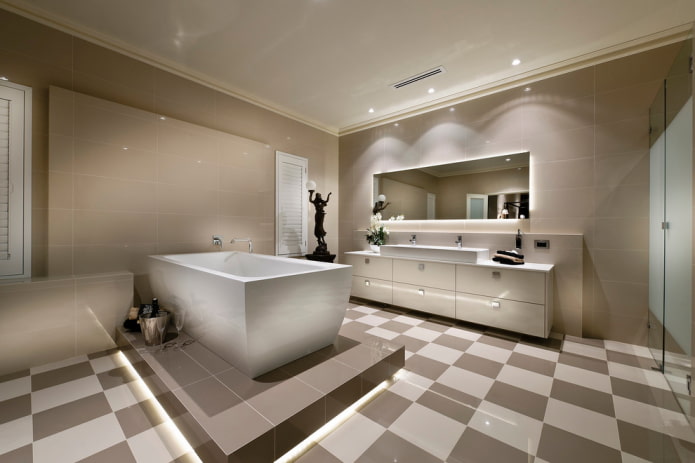
The photo shows the interior of a bathroom with a podium decorated with LED lighting.
Floors with backlighting in the kitchen
The kitchen space is considered the most favorable place for playing with light. The bulbs can be placed on the same level as the floor plane or the room can be zoned using podium lighting.
For the kitchen, it is appropriate to install durable LEDs or spotlights with thick protective glass.
An original design solution is to lay the floor with ceramic tiles with decor and built-in LEDs. As a rule, this option is quite expensive, so you can buy only a few fragments and complement individual sections of the flooring.
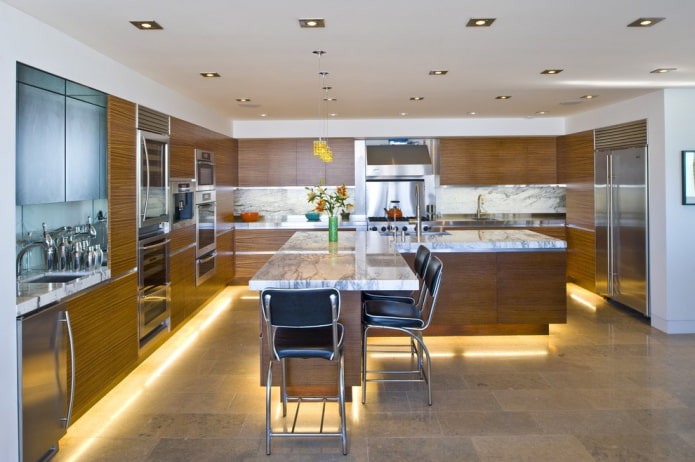
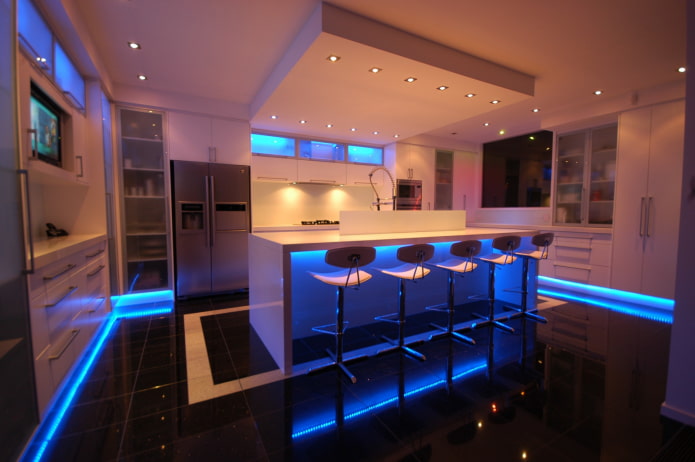
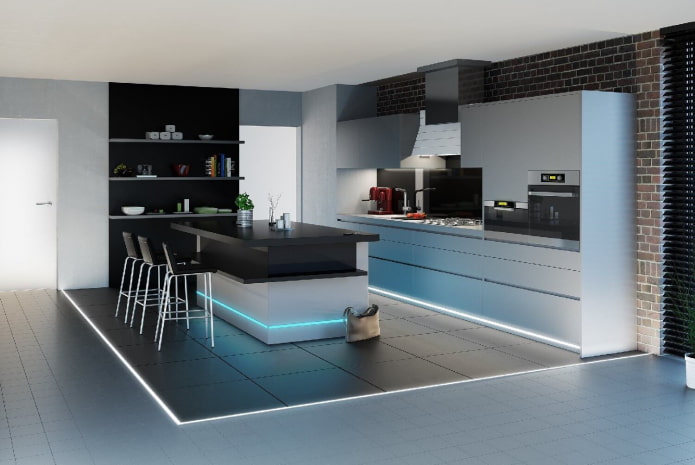
The photo shows LED strip in the floor design in the kitchen interior in a modern style.
Bedroom floors with lighting
LED strips, light modules or tubes are mounted on the floor under the bed as decorative and functional lighting in the bedroom.
The sleeping area can be highlighted in white or another shade that matches the surrounding design. Bottom lighting helps to expand the space, changes the appearance of the room and adjusts its shape. Many people equip floor lighting with a motion sensor. Thus, when entering the bedroom or getting out of bed at night, the bulbs will automatically turn on with a soft glow that will not disturb the sleeping person.
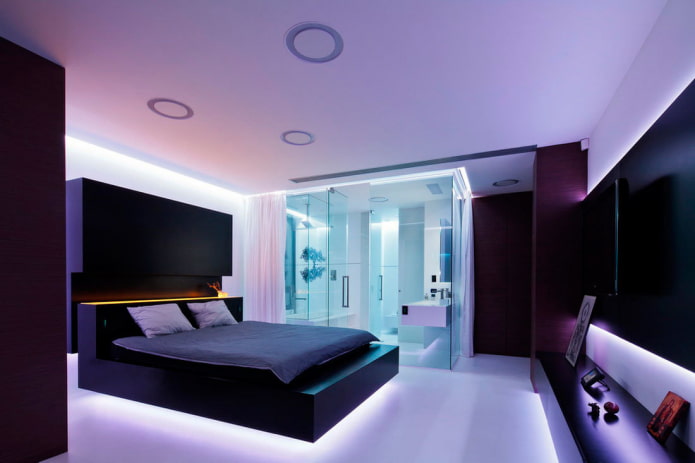
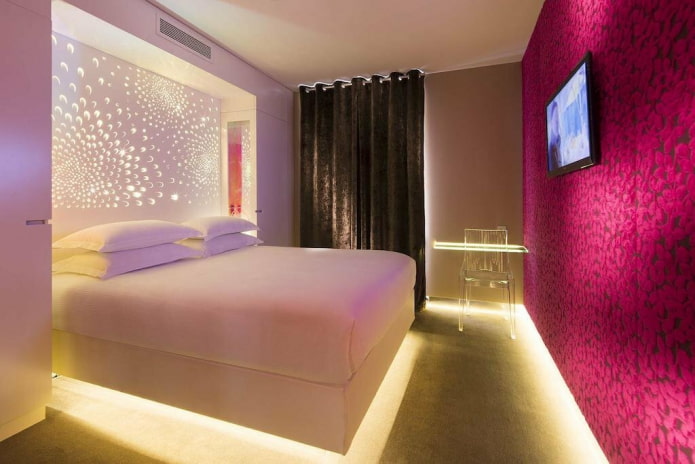
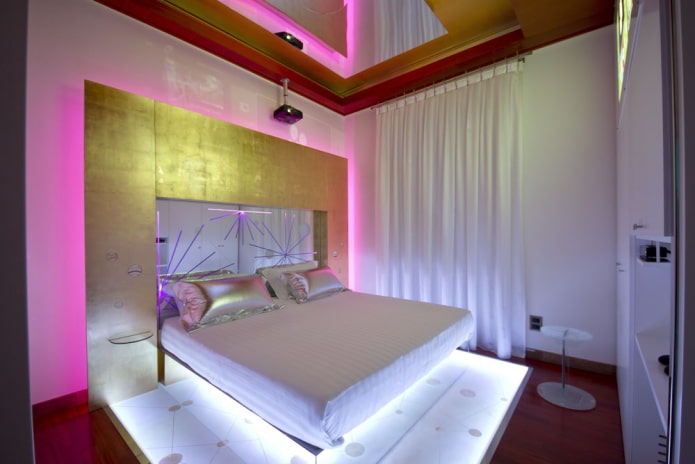
The photo shows the design of a bedroom in an apartment with floor lighting using light modules installed under the bed.
How to make lighting in a floor skirting board with your own hands?
The installation process can be easily done at home. You just need to get the necessary tools and auxiliary parts for installing skirting boards and lighting products.
- First, the installation area is determined, and the skirting board is adjusted to the required length. Then, several holes for fasteners are drilled through the skirting channel in the wall plane. In the case of a wooden surface, it is better to fix the skirting board with self-tapping screws.
- After the baseboard is secured, you need to choose a place to place the power supply and controller. A nearby cabinet or wall box will do for this.
- Next, you need to measure the required length of the LED strip. Special connecting clips are used to extend and connect the strip to the power supply.
- Using the adhesive base, the backlight must be secured in the baseboard channel and the wires must be brought out to the power supply.
- Upon completion of the installation process, the cable channel is closed using a matte acrylic profile or a transparent strip.
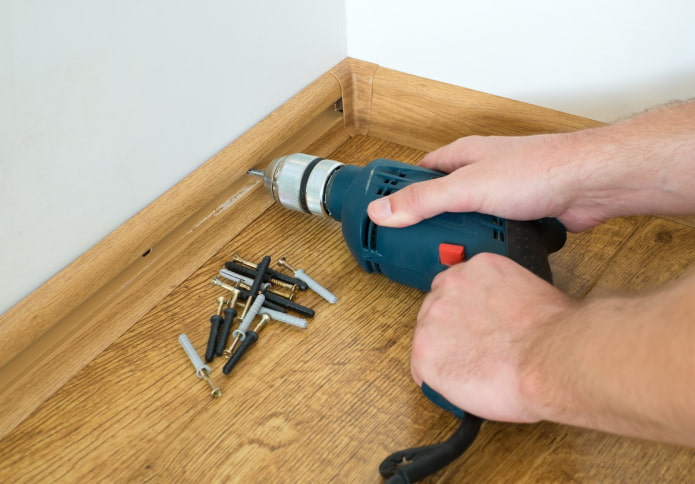
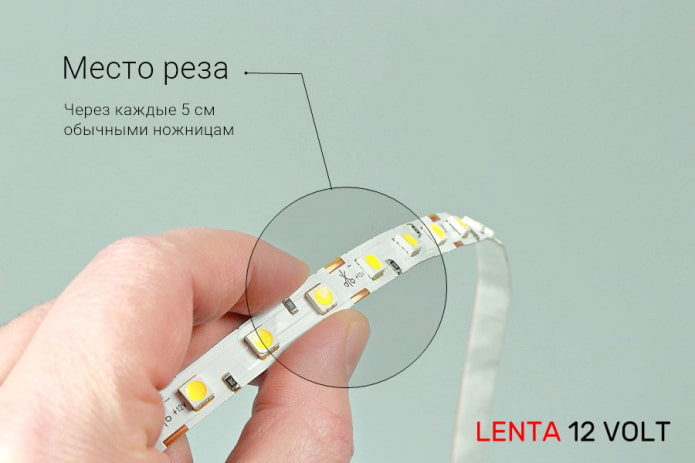
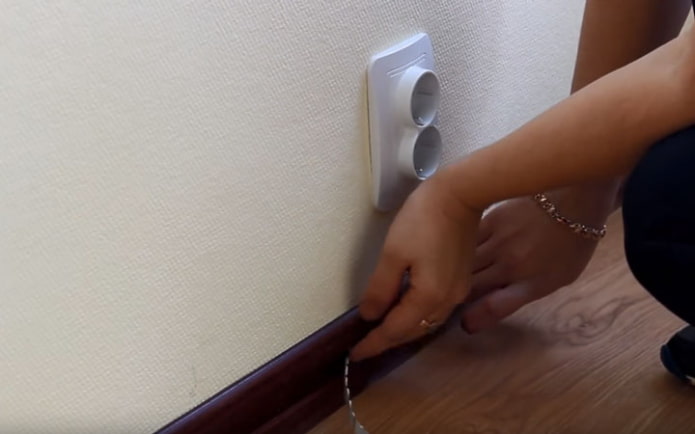
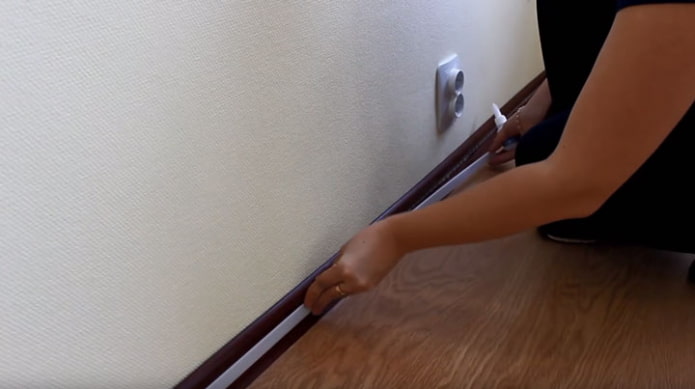
Watch another detailed video instruction:
Now reading:
- Tile Effect Linoleum: 50+ Interior Photos and Ideas for the Kitchen, Bathroom and Hallway
- Bright bathroom: 34 interior solutions with photos.
- Comprehensive Guide to Buying Used Land Rover Vehicles
- Compact Kitchen With Bar Counter: Design And Photos
- Kitchen sleeping area: 65 photos, design and zoning ideas.